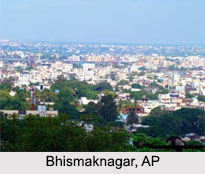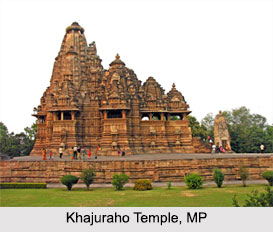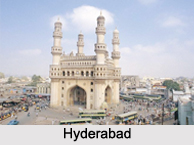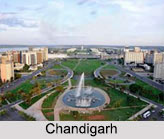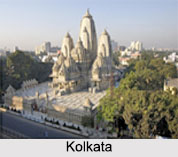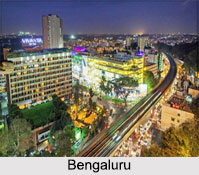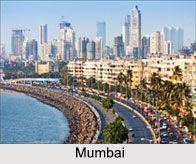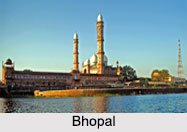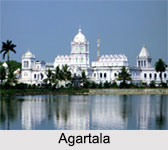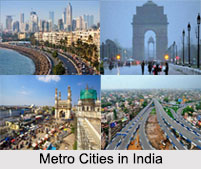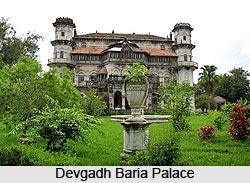 Devgadh Baria is a small town and municipality situated in the Gujarat state of India. It is located in the Dohad district of Gujarat. It is nestled in the foothills on the eastern border of Gujarat State on the bank of Panam River. It is 44 kilometres from Godhra in the West, 54 kilometres from Dahod in the East and 14 kilometres south of Ahmdabad-Indore highway (National Highway 59).
Devgadh Baria is a small town and municipality situated in the Gujarat state of India. It is located in the Dohad district of Gujarat. It is nestled in the foothills on the eastern border of Gujarat State on the bank of Panam River. It is 44 kilometres from Godhra in the West, 54 kilometres from Dahod in the East and 14 kilometres south of Ahmdabad-Indore highway (National Highway 59).
History of Devgadh Baria
This ancient town was founded in 1782. According to history, King Vatai Rawal"s two sons escaped from this region when Mohamad Beghado, the famous King of Gujarat, tried to conquer Pavagadh. Older brother Prithiraj"s son Udaisinh established the town of Chhota Udaipur, whereas the younger brother Dungerpursinh founded the town of Devagadh Baria. The Dungersinh family ruled the Baria State for the twelve generations. Later the Baria State was divided into Sagtala, Rajgadh, Haveli, Dhanpur, Limkheda and Randhikpur. These regions were known as Mahals.
After the death of King Dungersinh, a coronation ceremony was held in 1864 to declare his grandson Mansing as the ruler King. However, at that time he was only 9 years old. So, the administration of the state was entrusted to an Agency. King Mansinh took over the administration back from the Agency on 6 November 1876. A man of modern outlook, King Mansinh had introduced a number of schools in the state. He breathed his last in 1908, leaving behind him, two sons and a daughter namely Ranjitsinhji, Naharsinhji and Surajkuvarba.
In the year 1908, Ranjitsinhji was installed as a King. He was highly educated and had joined the Imperial Cadet Core. He was honoured with the title of "Knight Commander of India". Owing to this prestigious title, he was popularly known as Sir Ranjitsinhji. During his tenure, some very important public institutions were established and free education was offered to bring cultural awareness in the society. It was also a golden period for the sports in Baria during Sir Ranjitsinhji"s rule.
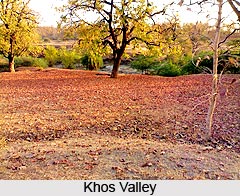 In 1948, after the death of Sir Ranjitsinhji, his grandson, Jaydipsinhji was established as a King. A few years after India gained independence from British rule, all the small kingdoms and kings were abolished and their authorities were taken away. In this transformation process, Baria was merged into Bombay (now Mumbai) State.
In 1948, after the death of Sir Ranjitsinhji, his grandson, Jaydipsinhji was established as a King. A few years after India gained independence from British rule, all the small kingdoms and kings were abolished and their authorities were taken away. In this transformation process, Baria was merged into Bombay (now Mumbai) State.
Jaydipsinhji was elected as a Member of Legislative Assembly, in Gujarat during the period of 1961-1987. He was also a Member of Parliament in Delhi, during the period of 1961-1987. Jaydipsinhji was a Rajyogi and had donated most of his personal assets to various institutions for the common good of the people of Baria and surrounding areas. The last ruler of Baria was H H Maharawal Jaideep Singhji.
Demographics of Devgadh Baria
According to 2001 India census, Devgadh Baria had a population of 19,201 of which males were 51% and females 49%. In the town, 15% of the population was under 6 years of age. On the basis of the report of the same year, it had an average literacy rate of 61% which was higher than the national average of 59.5%. The male literacy was 70% and female literacy was 53%.
Attractions of Devgadh Baria
Baria is home to quite a few picturesque places. There is Sunset point at Chougania valley from here, the nature admirers can enjoy a breath taking sight of egrets flying home from the river and Tidki reservoir in twilight. Khos valley situated less than 2 kilometres east of Chougania is also worth a visit.
People can also visit Ratan Mahal Sanctuary located in Devgadh Baria, at Madhya Pradesh border. It is a mixed deciduous forest and shelters Sloth Bears.
